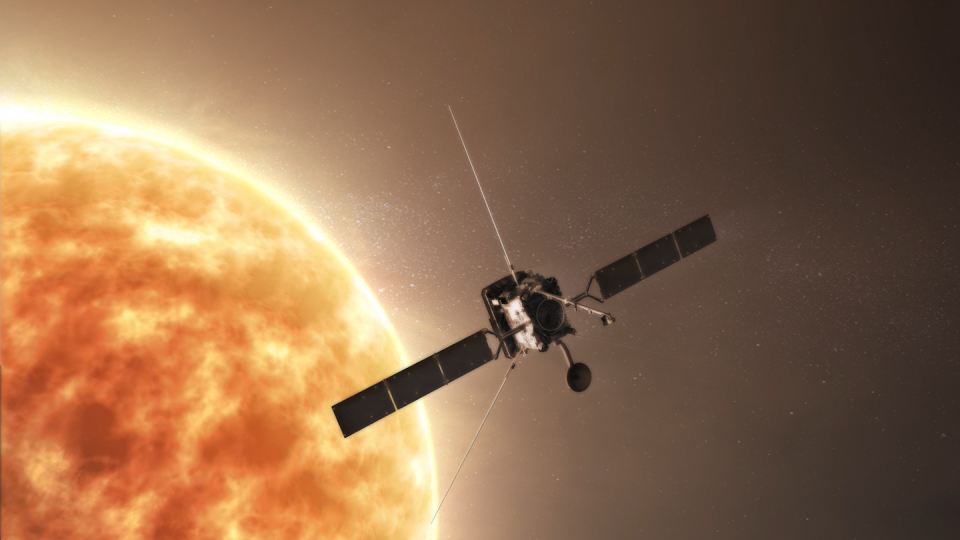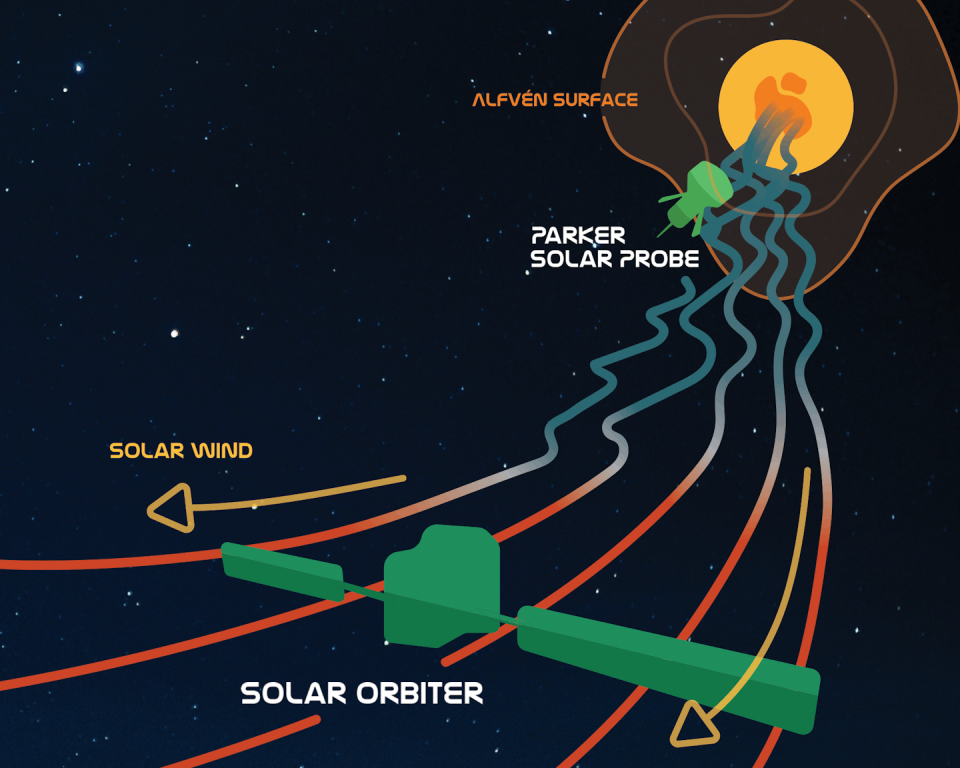Our sun produces a constant outward flow of plasma, or ionized gas, called the solar wind, that envelops our solar system. Outside Earth’s protective magnetosphere, the fastest solar wind zips by at speeds of 310 miles (500 kilometers) per second. But researchers have been at a loss to figure out how the wind gets enough energy to reach that speed—until now.
Our team of solar physicists has published a paper in August 2024 that points to a new energy source propelling the solar wind.
Solar wind discovery
Physicist Eugene Parker predicted the existence of the solar wind in 1958. The Mariner spacecraft, en route to Venus, would confirm its existence in 1962.
Studies since the 1940s have shown that the Sun’s corona, or solar atmosphere, can heat up to very high temperatures, over 2 million degrees Fahrenheit (or 1 million degrees Celsius).
Parker’s work suggested that this extreme heat could create an outward thermal pressure strong enough to overcome gravity and cause the outer layer of the Sun’s atmosphere to escape.
But as researchers took more detailed measurements of the solar wind near Earth, gaps in solar wind science quickly emerged. They found two problems, particularly in the fastest part of the solar wind.
First, the solar wind continued to heat up after leaving the hot corona without any explanation. And despite this additional heat, even the fastest winds did not have enough energy for scientists to explain how they could accelerate to such high speeds.
Both of these observations implied that some extra energy source must exist beyond Parker’s models.

Alfvén is waving
The Sun and solar wind are plasmas. Plasmas are like gases, but all particles in plasmas have a charge and respond to magnetic fields.
Similar to how sound waves travel through air and carry energy around Earth, plasmas have Alfvén waves moving through them. For decades, it has been predicted that Alfvén waves would affect the dynamics of the solar wind and play a key role in carrying energy in the solar wind.
But scientists couldn’t say whether these waves interacted directly with the solar wind or produced enough energy to power it. To answer those questions, they would need to measure the solar wind very close to the Sun.
In 2018 and 2020, NASA and the European Space Agency launched their respective flagship missions: Parker Solar Probe and Solar Orbiter. Both missions carried the right instruments to measure Alfvén waves near the Sun.
Solar Orbiter orbits between 1 astronomical unit (AU), where Earth is, and 0.3 astronomical units (AU), slightly closer than Mercury. Parker Solar Probe dives much deeper, coming within five solar diameters of the Sun, within the outer edges of the corona. Each solar diameter is about 865,000 miles (1,400,000 kilometers).


With these two missions working together, researchers like us can not only study the solar wind close to the Sun, but also how it changes between what Parker sees and what Solar Orbiter sees.
Magnetic rotations
During Parker’s first close approach to the Sun, it was observed that the solar wind near the Sun was filled with Alfvén waves.
Scientists used Parker to measure the magnetic field of the solar wind. They noticed that at some points, the field lines, or magnetic lines of force, fluctuated with such high amplitudes that they briefly changed direction. Scientists called these phenomena magnetic rotations. Together with Parker, they observed these energetic plasma fluctuations throughout the solar wind close to the Sun.
Our research team wanted to understand whether these spins have enough power to accelerate and heat the solar wind as it moves away from the Sun. We also wanted to look at how the solar wind changes as these spins release their energy. This would help us determine whether the energy from the spins goes into heating the wind, accelerating it, or both.
To answer these questions, we identified a unique spacecraft configuration in which both spacecraft pass through the same section of solar wind, albeit at different distances from the Sun.
The secret of returns
Closer to the Sun, Parker observed that about 10% of the solar wind energy was contained in magnetic spins, while Solar Orbiter measured less than 1%. This difference means that between Parker and Solar Orbiter, this wave energy is transferred into other forms of energy.
We did modeling similar to what Eugene Parker did. We built modern implementations of Parker’s original models and incorporated the effect of observed wave energy into these original equations.
By comparing both data sets and models, we could see specifically that this energy was contributing to both acceleration and heating. We knew that the wind was contributing to acceleration because it was faster in Solar Orbiter than in Parker. And we knew that the wind was contributing to heating because it was warmer in Solar Orbiter than it would have been without the waves.
These measurements showed us that the energy from the bends is both necessary and sufficient to explain the evolution of the solar wind as it travels away from the Sun.
Our measurements not only tell scientists about the physics of the solar wind and how the Sun might affect Earth, but they also have implications for the universe as a whole.
Many other stars have stellar winds that carry material into space. Understanding the physics of our local star’s solar wind also helps us understand stellar winds in other systems. Learning about stellar winds can give researchers more insight into the habitability of exoplanets.
This article is republished from The Conversation, a nonprofit, independent news organization that brings you facts and trusted analysis to help you understand our complex world. By Yeimy J. Rivera Smithsonian Institution; Michael L. Stevens, Smithsonian Institutionand Samuel Badman, Smithsonian Institution
Read more:
Yeimy J. Rivera receives funding from NASA’s Parker Solar Probe project through SAO/SWEAP subcontract 975569.
Michael L. Stevens receives funding from NASA’s Parker Solar Probe project through SAO/SWEAP subcontract 975569.
Samuel Badman receives funding from NASA’s Parker Solar Probe project through SAO/SWEAP subcontract 975569.